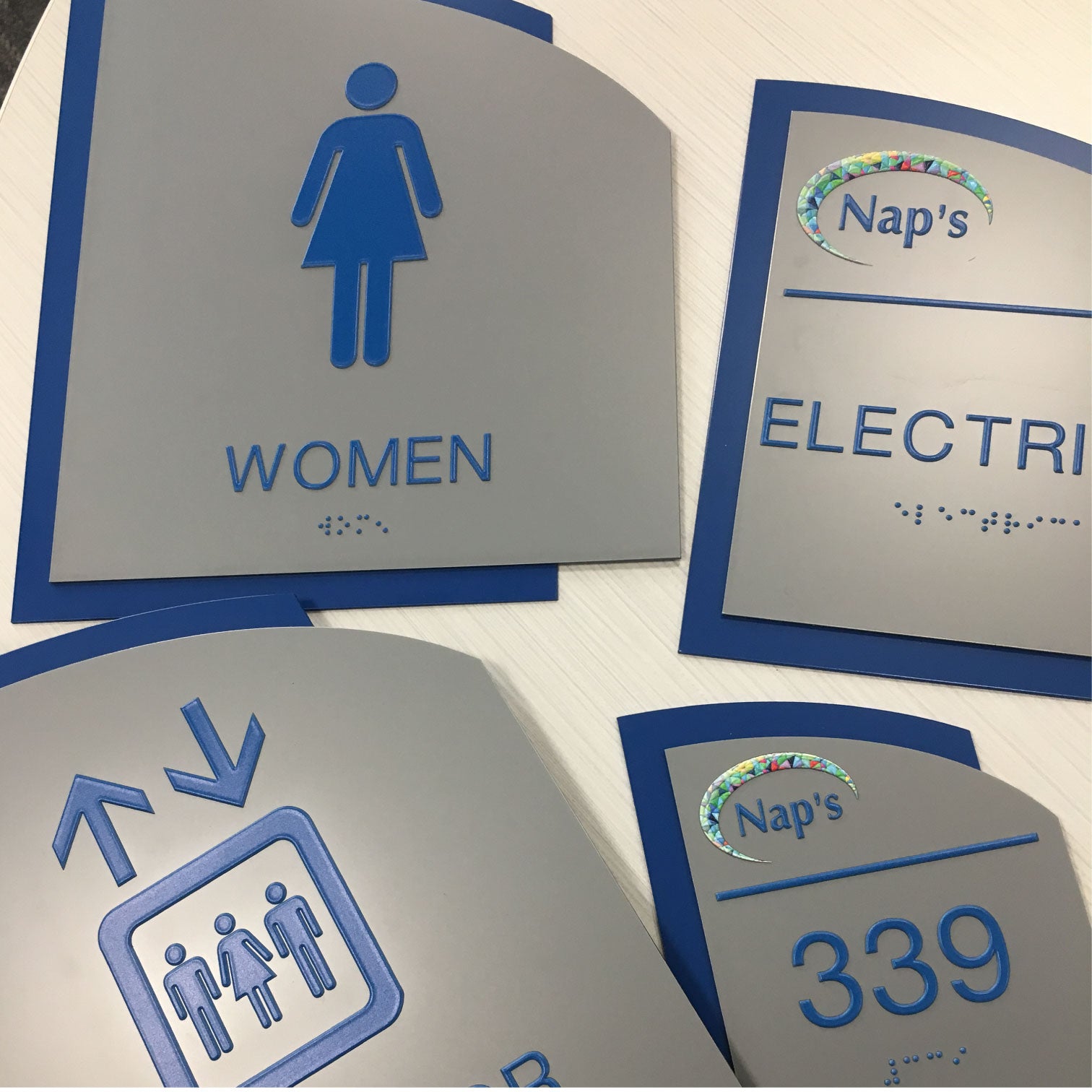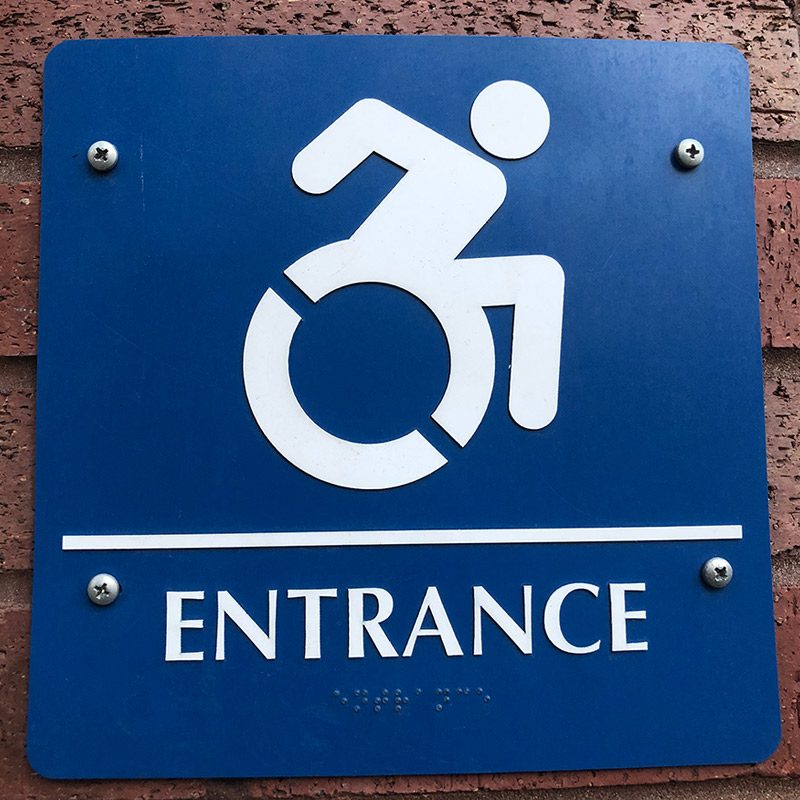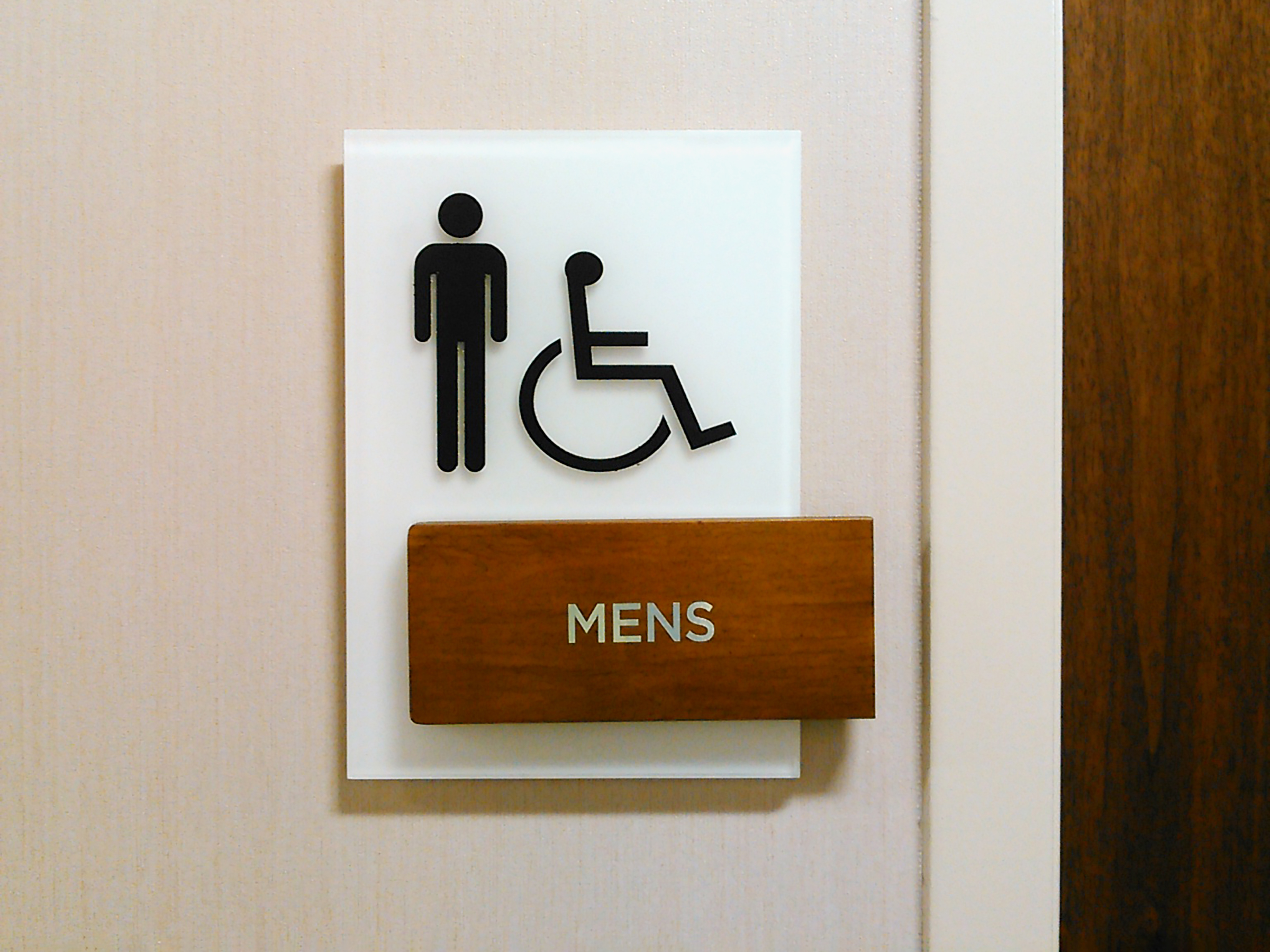Exploring the Trick Features of ADA Indications for Improved Availability
In the world of ease of access, ADA indications offer as silent yet effective allies, ensuring that areas are accessible and comprehensive for individuals with specials needs. By incorporating Braille and tactile elements, these signs damage barriers for the aesthetically damaged, while high-contrast shade schemes and clear typefaces cater to varied aesthetic requirements.
Relevance of ADA Compliance
Guaranteeing conformity with the Americans with Disabilities Act (ADA) is vital for promoting inclusivity and equal accessibility in public rooms and work environments. The ADA, enacted in 1990, mandates that all public facilities, companies, and transportation solutions fit people with disabilities, guaranteeing they enjoy the exact same legal rights and opportunities as others. Conformity with ADA requirements not only satisfies legal commitments yet additionally enhances a company's track record by showing its commitment to variety and inclusivity.
One of the essential aspects of ADA conformity is the application of obtainable signage. ADA indications are made to ensure that people with disabilities can conveniently browse with structures and spaces.
In addition, sticking to ADA regulations can alleviate the danger of legal consequences and potential penalties. Organizations that fail to comply with ADA standards might deal with fines or lawsuits, which can be both harmful and financially burdensome to their public image. Hence, ADA compliance is essential to cultivating a fair atmosphere for every person.
Braille and Tactile Components
The consolidation of Braille and responsive aspects right into ADA signage symbolizes the concepts of ease of access and inclusivity. These features are vital for people who are aesthetically damaged or blind, allowing them to browse public areas with greater freedom and self-confidence. Braille, a tactile writing system, is crucial in providing written information in a layout that can be conveniently viewed via touch. It is normally put beneath the equivalent message on signs to guarantee that individuals can access the information without visual help.
Responsive elements prolong past Braille and consist of raised personalities and symbols. These parts are developed to be noticeable by touch, enabling people to identify room numbers, restrooms, departures, and various other vital areas. The ADA establishes details standards regarding the dimension, spacing, and placement of these responsive aspects to maximize readability and guarantee uniformity across different environments.

High-Contrast Color Pattern
High-contrast color design play a crucial role in enhancing the visibility and readability of ADA signage for people with aesthetic impairments. These plans are important as they make best use of the difference in light reflectance between message and background, guaranteeing that indicators are conveniently noticeable, even from a range. The Americans with Disabilities Act check that (ADA) mandates the use of specific shade contrasts to fit those with minimal vision, making it an important facet of compliance.
The efficacy of high-contrast shades exists in their ability to attract attention in different lighting conditions, consisting of poorly lit environments and areas with glare. Typically, dark text on a light history or light message on a dark background is employed to accomplish optimum contrast. Black text on a white or yellow history gives a stark visual distinction that helps in fast acknowledgment and understanding.

Legible Fonts and Text Size
When thinking about the layout of ADA signage, the selection official website of readable fonts and proper message size can not be overstated. The Americans with Disabilities Act (ADA) mandates that fonts need to be not italic and sans-serif, oblique, manuscript, extremely ornamental, or of unusual form.
According to ADA standards, the minimum message height ought to be 5/8 inch, and it needs to boost proportionally with seeing range. Consistency in message size adds to a cohesive aesthetic experience, helping people in navigating settings efficiently.
Furthermore, spacing in between letters and lines is indispensable to legibility. Ample spacing stops characters from showing up crowded, boosting readability. By adhering to these standards, developers have a peek at these guys can substantially improve availability, ensuring that signs serves its intended purpose for all people, despite their aesthetic capacities.
Efficient Positioning Techniques
Strategic positioning of ADA signs is vital for taking full advantage of availability and making certain conformity with lawful criteria. ADA guidelines stipulate that signs should be placed at an elevation in between 48 to 60 inches from the ground to guarantee they are within the line of view for both standing and seated individuals.
In addition, indications must be put adjacent to the latch side of doors to permit very easy identification before access. Uniformity in indication placement throughout a center enhances predictability, lowering complication and enhancing overall customer experience.

Final Thought
ADA signs play an important duty in promoting availability by incorporating functions that attend to the requirements of individuals with disabilities. These aspects collectively foster an inclusive setting, emphasizing the importance of ADA compliance in making certain equivalent accessibility for all.
In the world of availability, ADA indications offer as quiet yet powerful allies, guaranteeing that spaces are navigable and comprehensive for people with specials needs. The ADA, passed in 1990, mandates that all public facilities, companies, and transportation services accommodate people with handicaps, guaranteeing they delight in the same civil liberties and chances as others. ADA Signs. ADA indications are designed to make certain that people with impairments can conveniently navigate with structures and rooms. ADA guidelines stipulate that signs must be installed at an elevation between 48 to 60 inches from the ground to ensure they are within the line of sight for both standing and seated people.ADA indications play an important duty in promoting accessibility by incorporating features that resolve the requirements of individuals with specials needs